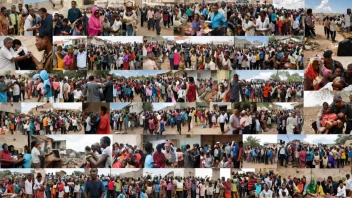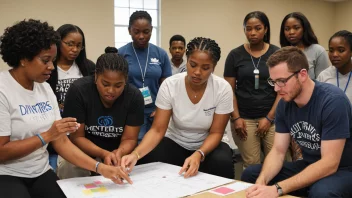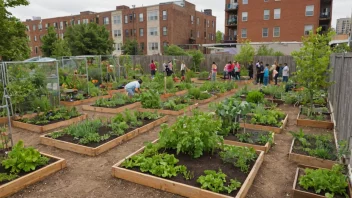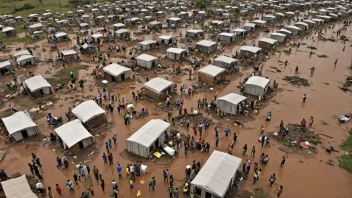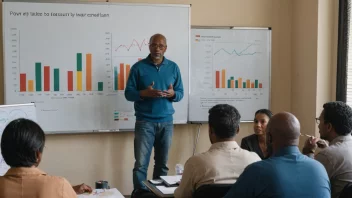In an increasingly interconnected world, the importance of fostering awareness about humanitarian issues in schools cannot be overstated. Educating students about the challenges faced by marginalized communities, the impact of poverty, and the necessity of social justice is vital in nurturing empathetic and informed global citizens. Schools serve as a foundation for young minds, and by integrating humanitarian education into the curriculum, we can inspire the next generation to engage in community service, advocate for social change, and contribute positively to the world around them. This article explores effective strategies for creating awareness on humanitarian issues within educational settings.
Integrating Humanitarian Themes into the Curriculum
One of the most effective ways to create awareness about humanitarian issues in schools is to integrate these themes into the existing curriculum. Subjects such as history, social studies, and even science can be enriched by incorporating discussions on humanitarian crises, environmental challenges, and global inequalities. For example, when discussing historical events, educators can highlight the humanitarian implications of these occurrences, such as the impact of wars on civilian populations or the role of international aid organizations.
Additionally, literature classes can introduce students to texts that explore themes of social justice and human rights. By analyzing characters and narratives that reflect real-world struggles, students can develop a deeper understanding of empathy and the complexities of human experiences. This approach not only enhances critical thinking skills but also encourages students to consider their roles in addressing these issues.
Encouraging Critical Discussions
Creating a safe space for open dialogue is crucial in fostering awareness about humanitarian issues. Teachers can facilitate discussions around current events, inviting students to share their perspectives and feelings about various global challenges. This encourages critical thinking and allows students to express their ideas and concerns. Educators can pose thought-provoking questions that prompt students to consider the root causes of humanitarian crises and the role they can play in effecting change.
Moreover, incorporating debates and role-playing exercises can enhance students' understanding of different viewpoints. For example, students can engage in a simulation of a United Nations meeting, where they represent different countries and discuss global challenges. Such activities not only develop public speaking and negotiation skills but also instill a sense of responsibility and awareness of international relations.
Community Service Projects
Community service projects are an excellent way to put humanitarian awareness into action. Schools can partner with local organizations to create volunteer opportunities that allow students to engage directly with issues affecting their communities. Whether it's organizing a food drive, participating in environmental clean-ups, or volunteering at shelters, these hands-on experiences provide students with real-world insights into the challenges faced by others.
Furthermore, schools can encourage students to initiate their own projects based on their interests and passions. This empowers students to take ownership of their learning and fosters a sense of agency. For instance, a group of students passionate about environmental issues might create a campaign to promote recycling and sustainability within their school. Such initiatives not only raise awareness but also contribute positively to the community.
Utilizing Technology and Social Media
In today's digital age, technology and social media play a significant role in shaping perceptions and spreading awareness. Schools can leverage these tools to educate students about humanitarian issues and encourage them to become advocates for change. Educators can introduce students to online platforms that focus on global issues, such as humanitarian blogs, documentaries, and social media campaigns.
Students can also be encouraged to create their own content, such as blogs, videos, or podcasts, addressing humanitarian topics that resonate with them. This not only enhances their digital literacy skills but also empowers them to share their voices and insights with a broader audience. By utilizing technology, students can connect with peers around the world, fostering a sense of global citizenship.
Guest Speakers and Workshops
Inviting guest speakers who are actively involved in humanitarian work can provide students with valuable insights and inspiration. These speakers can share their experiences, challenges, and successes, offering real-life examples of how individuals can make a difference. Workshops led by these experts can also provide students with practical skills and knowledge related to humanitarian efforts, such as advocacy, conflict resolution, and community organizing.
Collaboration with local NGOs and community organizations can further enrich the educational experience. These partnerships can lead to workshops, seminars, and interactive sessions that allow students to engage directly with experts in the field, broadening their understanding of humanitarian issues and the various approaches to addressing them.
Fostering a Culture of Empathy and Compassion
Ultimately, creating awareness about humanitarian issues in schools is about fostering a culture of empathy and compassion. Educators play a crucial role in modeling these values and encouraging students to develop a sense of responsibility towards others. By celebrating diversity and promoting inclusivity within the classroom, schools can cultivate an environment where students feel valued and empowered to make a difference.
Recognizing and addressing biases, stereotypes, and discrimination within the school community is also essential. Initiatives that promote cultural competence and understanding can help students appreciate the rich tapestry of human experiences and the importance of social justice. Activities such as cultural exchange programs, multicultural fairs, and diversity workshops can enhance students' awareness and appreciation of different backgrounds and perspectives.
Conclusion
Creating awareness about humanitarian issues in schools is a multifaceted endeavor that requires collaboration, creativity, and commitment. By integrating humanitarian themes into the curriculum, encouraging critical discussions, facilitating community service projects, utilizing technology, inviting guest speakers, and fostering a culture of empathy, educators can empower students to become informed and compassionate global citizens. In doing so, we not only enrich the educational experience but also inspire future generations to take action and contribute positively to the world.

